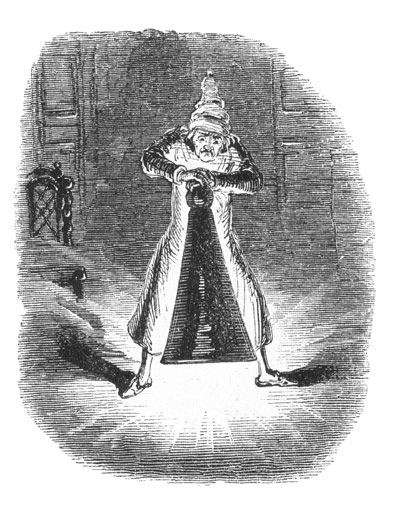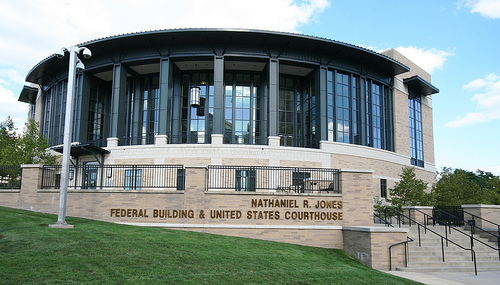 The legal blogosphere has been active the last two weeks with discussion of the recent article in the New York Times critical of LEED. The article in essence uses the example project of the Federal Building in Youngstown, Ohio as a sample for LEED projects that fail to be “green”. The Times in particular attacks the actual energy performance of a specific project as an example of why the LEED certified project is not in fact green. Reaction has been varied, from Shari Shapiro pointing out these discussions have been in the mix for some time to an impassioned, relatively emotional, reaction from Rob Watson, a board member of USGBC and significant national player in the green movement. Chris Cheatham has pointed out for discussion the interplay between green building success on the one hand and risk associated with projects receiving funding under the American Recovery and Reinvestment Act. Before we move on to the bigger picture, the article deserves the specific focus on the example project, called by the Times the “Federal Building”, but more properly known as the Nathaniel R. Jones Federal Building and US Courthouse (Youngstown, OH).
The legal blogosphere has been active the last two weeks with discussion of the recent article in the New York Times critical of LEED. The article in essence uses the example project of the Federal Building in Youngstown, Ohio as a sample for LEED projects that fail to be “green”. The Times in particular attacks the actual energy performance of a specific project as an example of why the LEED certified project is not in fact green. Reaction has been varied, from Shari Shapiro pointing out these discussions have been in the mix for some time to an impassioned, relatively emotional, reaction from Rob Watson, a board member of USGBC and significant national player in the green movement. Chris Cheatham has pointed out for discussion the interplay between green building success on the one hand and risk associated with projects receiving funding under the American Recovery and Reinvestment Act. Before we move on to the bigger picture, the article deserves the specific focus on the example project, called by the Times the “Federal Building”, but more properly known as the Nathaniel R. Jones Federal Building and US Courthouse (Youngstown, OH).
After first glance, the Times article raises more questions than it purports to answer. The article states, “[T]he building is hardly a model of energy efficiency. According to an environmental assessment last year, it did not score high enough to qualify for the Energy Star Label[.]” A review of the GSA study on its website reveals a few interesting facts that the Times left out of the article:
- The GSA study was of 14 first wave green GSA buildings ; 8 were LEED certified, 2 were LEED registered, one used Green Building Challenge, and three were designed with an emphasis on energy efficiency
- The Federal Building project did not seek any credits for energy efficiency under EA Credit 1. Similarly, the project did not seek points for additional commissioning, measurement and verification, or green power
- While the Federal Building project did not receive the 75 score required to qualify for Energy Star, it did in fact reach a 58 despite the fact the building did not even try for the energy efficiency credits. Every other GSA project contained in the study qualified for Energy Star
 So how did a project that is alleged by the Times to have a “major gas guzzler” of a cooling system reach LEED certification in 2002? A review of the GSA’s webpage describing the project, and further discussion at BuildingGreen.com, reveals that the site is a downtown redevelopment of a previously paved site. The project included restoration and planting with native and adapted vegetation and reduction of impervious area by a whopping 58%. The project reduced ozone depletion by use of HFC refrigerants and the fire suppression system includes no halons. Over 72% of project waste was recycled and the project used structural steel with 90% post-consumer recycled content. Over 62% of the project’s building materials were manufactured locally.
So how did a project that is alleged by the Times to have a “major gas guzzler” of a cooling system reach LEED certification in 2002? A review of the GSA’s webpage describing the project, and further discussion at BuildingGreen.com, reveals that the site is a downtown redevelopment of a previously paved site. The project included restoration and planting with native and adapted vegetation and reduction of impervious area by a whopping 58%. The project reduced ozone depletion by use of HFC refrigerants and the fire suppression system includes no halons. Over 72% of project waste was recycled and the project used structural steel with 90% post-consumer recycled content. Over 62% of the project’s building materials were manufactured locally.
The New York Times’ focus on the Federal Building project does bring a couple of key themes into focus. First, “green” is not the same to everyone. Indeed, Build2Sustain has had a fascinating discussion on-going on its blog and also on its various members blogs and twitter accounts comparing use of “green” and use of “sustainable” terminology. The use of loose labels where everyone does not agree on a shared meaning can create misunderstandings. Green does not necessarily mean energy efficient as there are plenty of areas allowing points under LEED that can in fact inhibit energy efficiency.
Second, the project used as the centerpiece of the article was completed in September 2002. LEED has come a long way since then and trying to extrapolate structures that were designed roughly ten years ago and apply that to current conditions may be suspect.
Finally, the USGBC has in fact already taken steps to address these issues. The new LEED 2009 standards incorporate a shift in greater emphasis towards energy efficiency in particular. Further, USGBC is taking steps to require on-going reporting and has indeed discussed using decertification as a means to require on-going compliance. (Please visit Matt Devries’ blog for an excellent recap of the commentary that erupted when the decertification discussion first broke several months ago).
In summation, it appears like the NYT dug and found an example of an old project to raise objections that the USGBC has already been addressing with LEED … in short, they are perhaps trying to resurrect the Ghost of LEED Past. In a few days, we will visit with the Ghosts of LEED Present and Future and try to extrapolate where LEED may be heading and what that means in terms of future risk management, contract exposure, and potential economic pitfalls associated with these trends.
Image (Courthouse): by OZinOH

